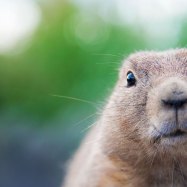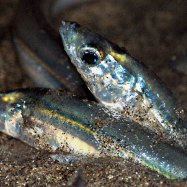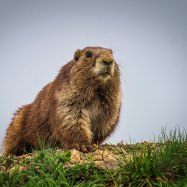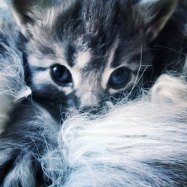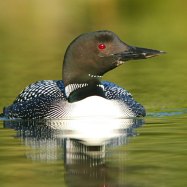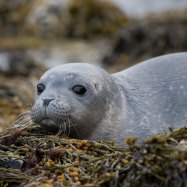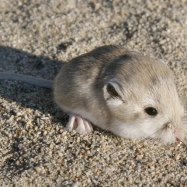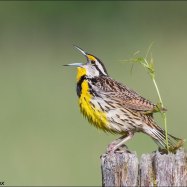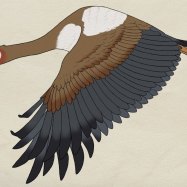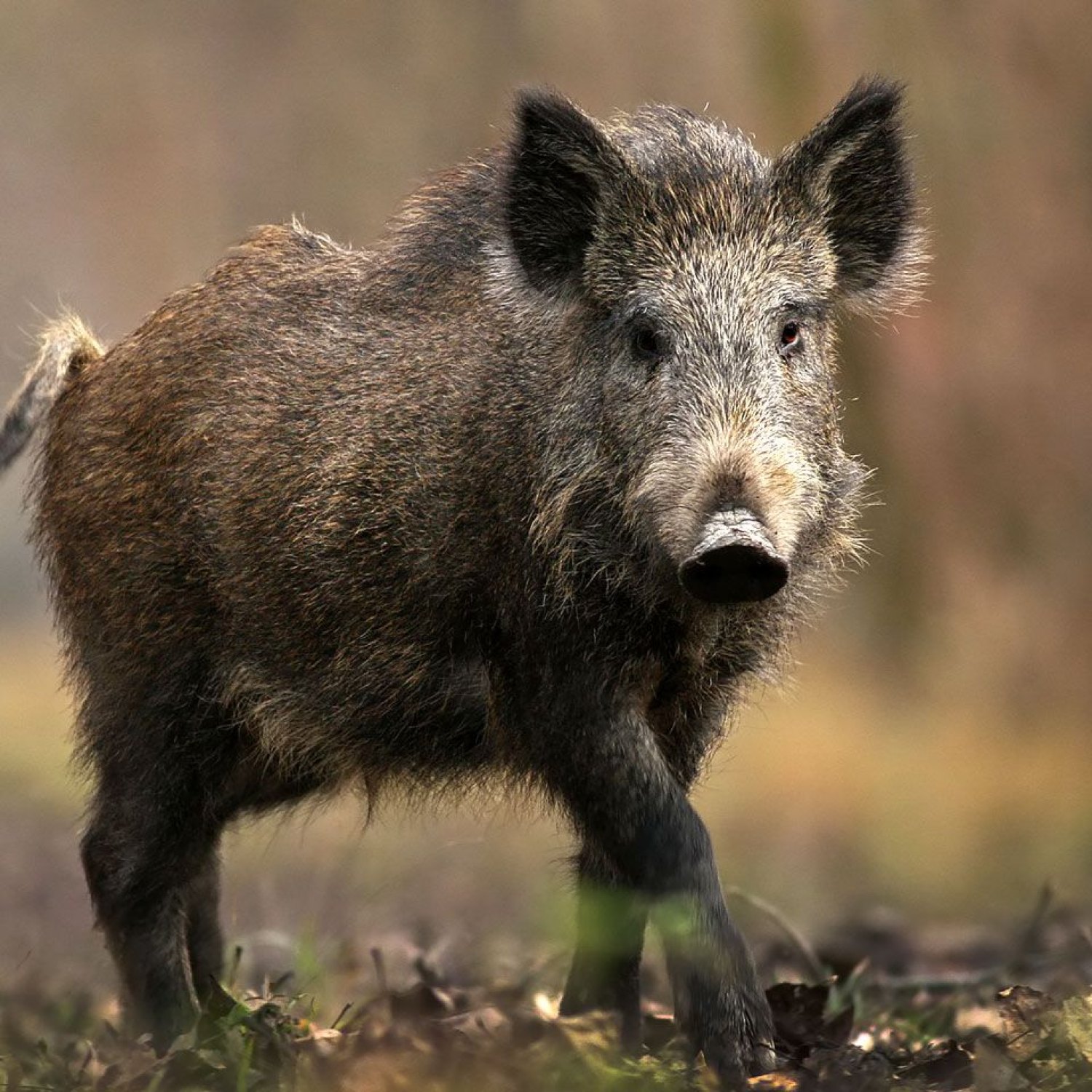
Wild Boar
120-180 cm (47-71 in)
Wild boars are large and stocky animals, measuring 120-180 cm in length. They belong to the Suidae family and can be found worldwide. These omnivores have a sharp sense of smell and are known for their distinctive tusks. Despite their intimidating appearance, wild boars are typically shy and avoid humans.
Animal Details Summary:
Common Name: Wild Boar
Kingdom: Animalia
Habitat: Forests, grasslands, wetlands
The Mighty Wild Boar: A Fascinating Creature of the Wild
The wild boar, scientifically known as Sus scrofa, is a majestic animal that captivates with its powerful presence and intriguing characteristics. This magnificent creature belongs to the Animalia kingdom, the Chordata phylum, and the Mammalia class. It is classified under the Artiodactyla order and the Suidae family, along with other species of pigs.The Wild Boar, also commonly known as the boar or Eurasian wild pig, has fascinated humans for centuries with its ferocity and intelligence Wild Boar. This beautiful mammal, regarded as a symbol of strength and courage, has been featured in various ancient mythologies and legends. In this article, we will explore the fascinating world of the wild boar and learn more about its habitat, behavior, and unique features.
A Habitat Fit for a King
The wild boar is a versatile creature that has adapted to various habitats across the globe. It can be found in forests, grasslands, and wetlands in Europe, Asia, and Africa. While Europe is considered the country of origin for this species, they are now widespread and can be found in countries worldwide.In the wild, wild boars prefer to live in dense forests with a close water source. They are also found in open areas such as meadows, farmlands, and grasslands, where they have access to an ample supply of food. The wild boar is an expert at building burrows, and they can often be found dwelling in hollowed-out trees and underground dens.
Eating Habits of a Wild Boar
The wild boar is an omnivorous animal, meaning it feeds on both plants and animals Wildebeest. Its diet primarily consists of roots, tubers, fruits, nuts, and insects. However, they are also known to hunt and eat small animals such as rodents, amphibians, and even young deer. They have an excellent sense of smell, making them successful foragers. Their powerful snouts and sharp tusks further aid in digging and breaking through tough vegetation.Wild boars are territorial animals, and they do not share their feeding grounds with other species. They have a unique feeding pattern, where they prefer to eat at night, searching for food in the safety of the darkness. This behavior helps them avoid predators that may target them during the day.
The Fascinating Appearance of a Wild Boar
With an average length of 120-180 cm (47-71 in) and a weight of 50-200 kg (110-440 lbs), the wild boar is an impressive animal. It has a large and stocky body shape, with short legs, a broad head, and a curved back. Its most striking feature is its thick and coarse coat, which varies in color from shades of brown to black. The males have a prominent mane of fur on their neck and shoulders, adding to their overall impressive appearance.However, the most distinguishing feature of a wild boar is undoubtedly its curved and sharp tusks. These tusks are continuously growing and are used for both defense and foraging. They can inflict severe damage to potential predators and have played a crucial role in the survival of this species.
The Mysterious Breeding Habits of Wild Boars
Wild boars are solitary animals, and they only come together for breeding purposes. The breeding season varies based on the geographical location, but it typically takes place during the winter months. Male wild boars, also known as boars, will often engage in fierce battles to establish dominance and secure a mate.Once a female, also known as a sow, is impregnated, she will have a gestation period of four months, after which she will give birth to a litter of 4-6 piglets. These newborns are precocial, meaning they are quite developed, and they can walk and follow their mother within hours of being born. The piglets will stay with their mother for the first year, after which they will venture off on their own.
Part of the Ecosystem
The wild boar, like all animals, plays a vital role in maintaining the balance in the ecosystem. As they feed on both plants and animals, they regulate the population of certain species, preventing overgrazing in certain areas. They also play a crucial role in seed dispersal, as they consume various fruits and nuts and then deposit them in different locations through their droppings.In addition, wild boars are preyed upon by various predators, including wolves, bears, and humans. The survival and growth of this species are therefore crucial for the survival of these predatory species.
The Future of Wild Boars
Despite their widespread population, the wild boar faces several threats to its survival. Habitat loss due to deforestation, human-wildlife conflict, and hunting for sport and meat are some of the significant dangers faced by this magnificent animal. Furthermore, the introduction of non-native species, such as the domestic pig, has resulted in the hybridization of populations, diluting the genetic purity of wild boars.However, conservation efforts and strict regulations on hunting and population control have helped in stabilizing the population of wild boars in many regions. They are now classified as a species of "least concern" on the International Union for Conservation of Nature (IUCN) Red List. The European Union has also designated the wild boar as a protected species, banning its commercial hunting and trade.
A Fierce but Misunderstood Animal
The wild boar has long been misunderstood and considered a nuisance due to its destructive nature, resulting in conflicts with humans. However, with proper understanding and conservation efforts, humans and wild boars can successfully coexist. It is essential to remember that the wild boar is a fascinating and necessary part of the ecosystem, and its survival is crucial for maintaining the balance in nature.In conclusion, the wild boar, with its resilience and unique characteristics, is a remarkable animal that has captured the attention of humans for centuries. Its strength, intelligence, and fierce nature have earned it a special place in folklore and mythology, making it an iconic species. As we continue to learn more about this extraordinary creature, it is our responsibility to protect and preserve its habitat, ensuring its place in the wild for generations to come.

Wild Boar
Animal Details Wild Boar - Scientific Name: Sus scrofa
- Category: Animals W
- Scientific Name: Sus scrofa
- Common Name: Wild Boar
- Kingdom: Animalia
- Phylum: Chordata
- Class: Mammalia
- Order: Artiodactyla
- Family: Suidae
- Habitat: Forests, grasslands, wetlands
- Feeding Method: Omnivorous
- Geographical Distribution: Europe, Asia, Africa
- Country of Origin: Europe
- Location: Worldwide
- Animal Coloration: Varies, typically brown or black
- Body Shape: Large and stocky
- Length: 120-180 cm (47-71 in)
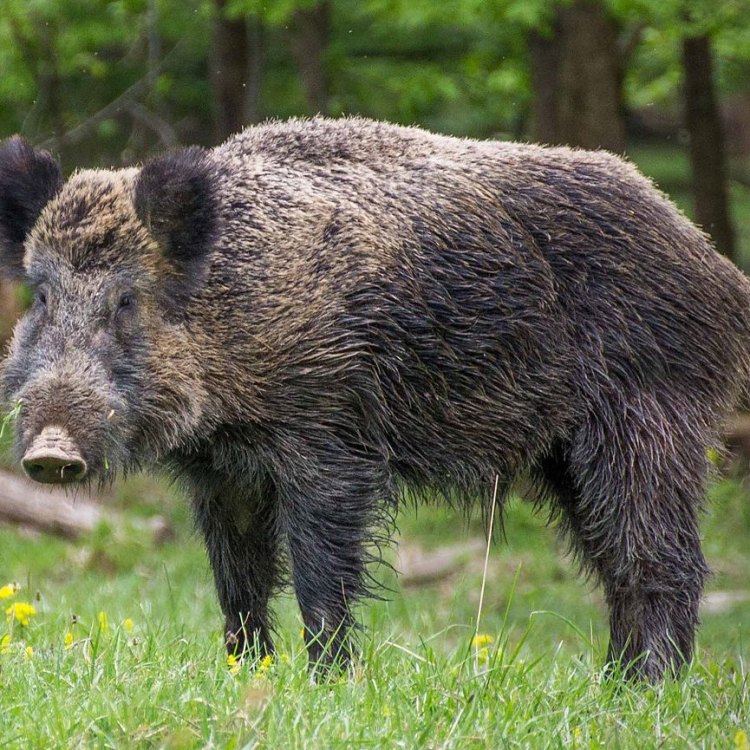
Wild Boar
- Adult Size: 100-150 kg (220-330 lb)
- Average Lifespan: 10-20 years
- Reproduction: Sexual
- Reproductive Behavior: Polygamous
- Sound or Call: Grunt, squeal
- Migration Pattern: Non-migratory
- Social Groups: Groups called sounders
- Behavior: Mainly nocturnal, forage for food, wallow in mud
- Threats: Habitat loss, hunting, disease
- Conservation Status: Least Concern
- Impact on Ecosystem: Seed dispersal, soil aeration
- Human Use: Hunting, meat, leather, sport
- Distinctive Features: Curved tusks, bristly fur
- Interesting Facts: Strong sense of smell, good swimmers
- Predator: Humans, large carnivores
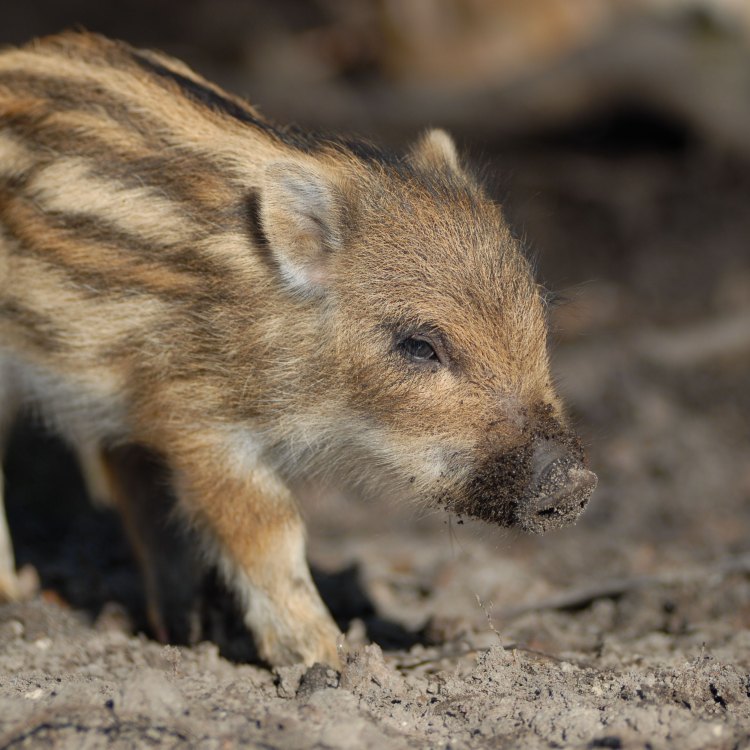
Sus scrofa
The Wild Boar: A Hardy and Fascinating Creature
The wild boar, also known as the Eurasian wild pig, is a species of mammal that belongs to the family Suidae. They are native to Asia and Europe, but they have been introduced to other parts of the world due to their popularity as game animals. Despite being widely hunted and facing various threats, these animals have managed to survive and thrive in many regions. In this article, we will explore the unique features of the wild boar, its behavior, role in the ecosystem, and its interaction with humans PeaceOfAnimals.Com.Size and Lifespan
The wild boar is a large and robust animal, with an adult size ranging from 100-150 kg (220-330 lb). They have a muscular and compact body, with short legs and a broad head. At birth, piglets weigh around 1-2 kg and they grow rapidly in their first year. However, their growth rate decreases as they age and they reach their full size within 2-3 years.In the wild, wild boars have an average lifespan of 10-20 years, but it can vary depending on their living conditions and predators. Male boars tend to have a shorter lifespan due to territorial fights and injuries sustained during mating season.
Reproduction
Like most mammals, the wild boar is a sexual species. They reach sexual maturity between 8-15 months, depending on their gender and environment. Mating can occur throughout the year, but it is most common during the winter months White Shark. Male boars, also known as boars, will compete with each other for the right to mate with a female boar, also known as a sow.Reproductive Behavior
Wild boars are polygamous, meaning that one male can mate with multiple females. During mating season, the dominant male will temporarily separate from the group and roam the area, looking for sows in heat. Once he finds a suitable mate, he will mount her and mating will occur. After a gestation period of around 4 months, the sow will give birth to a litter of 4-6 piglets. These piglets will stay with the mother for a few months before becoming independent.Sound or Call
Wild boars are known for their vocalizations, with the most distinctive being the grunt and squeal. Grunts are used for communication within the herd, while a squeal is usually a sign of distress or fear. These sounds can also be used to intimidate or warn predators.Migration Pattern
Unlike many other species, wild boars are non-migratory animals. They have a wide range of habitat preferences, including forests, grasslands, and wetlands, and will move within their home range depending on food availability and other factors. They are highly adaptable creatures, which has contributed to their survival in various environments.Social Groups
Wild boars live in groups called sounders, consisting of females and their offspring. Sounders can range in size from a few individuals to more than 50 animals. Male boars tend to live solitary lives, only joining a sounder during mating season.Within a sounder, there is a complex hierarchy, with a dominant female controlling the group. She is the only one allowed to mate with the dominant male. The other females in the sounder will also have their own smaller hierarchies. It is a dynamic and ever-changing social structure.
Behavior
Wild boars are mainly nocturnal animals, meaning they are most active during the night. They have poor eyesight but a keen sense of smell, which helps them navigate and forage for food. They are omnivorous, meaning they eat both plants and animals. Their diet includes roots, tubers, fruits, insects, small mammals, and even carrion.One unique behavior of the wild boar is its tendency to wallow in mud. They do this to regulate their body temperature and keep cool, as well as to rid themselves of parasites and cover their scent from predators.
Threats
The wild boar faces various threats in the wild, including habitat loss, hunting, and disease. As human populations expand and cities and towns encroach on their natural habitats, wild boars are losing their homes and food sources. They are also targeted by hunters for their meat and leather, as well as for sport. Additionally, they are susceptible to diseases such as African Swine Fever, which can be devastating to their populations.Conservation Status
Despite these threats, the wild boar is currently classified as "Least Concern" on the IUCN Red List. This is due to their adaptability and ability to thrive in different environments. However, conservation efforts are still necessary to protect their populations in certain areas where they are facing more significant threats.Impact on Ecosystem
The wild boar plays an essential role in its ecosystem, and its presence or absence can have a significant impact. As omnivores, they eat a wide variety of plants and animals, which helps to control the growth of vegetation and small animal populations. This, in turn, affects the availability of resources for other animals, creating a delicate balance in the ecosystem.Moreover, wild boars aid in seed dispersal by consuming fruits and then spreading the seeds through their feces. They also play a role in soil aeration as they dig for food, which breaks up the soil and allows for better oxygen and moisture circulation.
Human Use
Humans have a long history of interacting with wild boars. They have been considered a game animal for centuries and are still hunted for their meat, leather, and sport. Wild boars are also used in agriculture and farm settings, where they are raised for their meat and often crossbred with domestic pigs to improve the meat's quality.Distinctive Features
The wild boar has several distinctive features that set it apart from other animals. Its most notable feature is its curved tusks, which can grow up to 5 inches long. These tusks are primarily used for digging and rooting, but also for defense against predators and during mating season.Wild boars also have a thick and bristly coat of fur, which varies in color from dark brown to gray. This fur helps to protect them from cold temperatures and gives them a rough and tough appearance.
Interesting Facts
In addition to their unique physical features, wild boars also have some interesting traits and abilities. For example, they have a keen sense of smell, which is crucial for locating food and avoiding predators. They can also run at speeds of up to 30 miles per hour and are surprisingly good swimmers, using their short but powerful legs to navigate through water.Predators
The wild boar's biggest predators are humans and large carnivores such as bears, wolves, and tigers. In areas where their populations are controlled through hunting, their main threat is habitat loss due to expanding human populations. However, in areas with fewer human interactions, the risk of predation by large carnivores is more significant.The Resilience of the Wild Boar
Despite facing numerous challenges, the wild boar has proven to be a resilient and adaptable species. They have managed to survive and thrive in various environments, and their unique characteristics and behaviors make them a fascinating animal to study. As human populations continue to expand and encroach on their natural habitats, it is essential to understand the vital role that wild boars play in their ecosystems and take steps to protect and conserve their populations for future generations.

The Mighty Wild Boar: A Fascinating Creature of the Wild
Disclaimer: The content provided is for informational purposes only. We cannot guarantee the accuracy of the information on this page 100%. All information provided here may change without prior notice.

